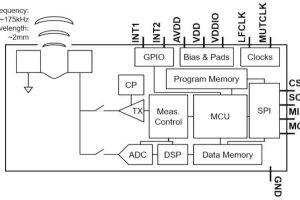
Called AH1899x, they have two power pads and a binary output that is either high or low depending on the local field. Packaging is a 1 x 1 x 0.4mm DFN1010-4.
To save power, each includes measure-then-sleep logic and only updates periodically.
The parts are:
- AH1899A: ±18G operate, ±12G release, 45ms update, 0.95μA draw
- AH1899B: ±30G operate, ±20G release, 45ms update, 0.95μA draw
- AH1899S: ±30G operate, ±20G release, 5.6ms update, 5.1μA draw
± on the magnetic parameters indicates that they will work with either the north or south pole of a magnet.
There is a wide tolerance on the above typical figures. For example: the operate point of the AH1899B can be between 20 and 40G, the release between 10 and 30G, and update rate can be as low as 90ms.
Looking at the AH1899B data sheet, the company looks to be aiming at 10G hysteresis – with maximum or minimum figures provided.
Current draw during the 45µs typ (90µs max) awake time is 1.4mA max (1.2V supply).
The absolute maximum allowed on the supply pin is 2.2V, and the parts operate over -40 to +85°C. Trip points are only slightly affected by temperature and supply voltage.
“These switches integrate with state-of-the-art application chipsets operating at 1.2V,” according to the company, which expects them to be “used to detect the open-closed status of covers and cases for portable electronic devices, such as smartphones and tablets. They are also designed for proximity detection in digital cameras and handheld gaming consoles, as well as general contactless switching”.
 Electronics Weekly Electronics Design & Components Tech News
Electronics Weekly Electronics Design & Components Tech News



